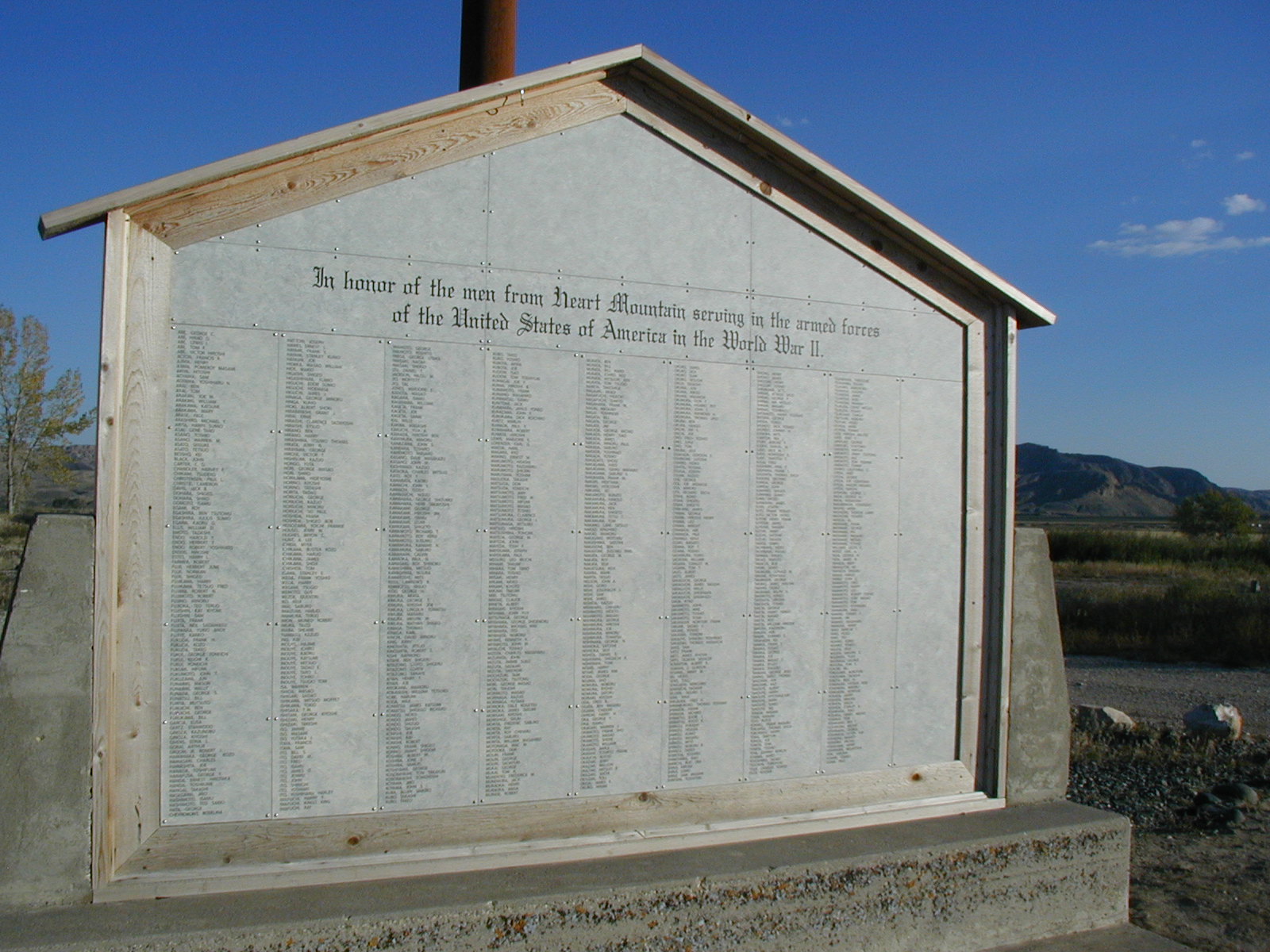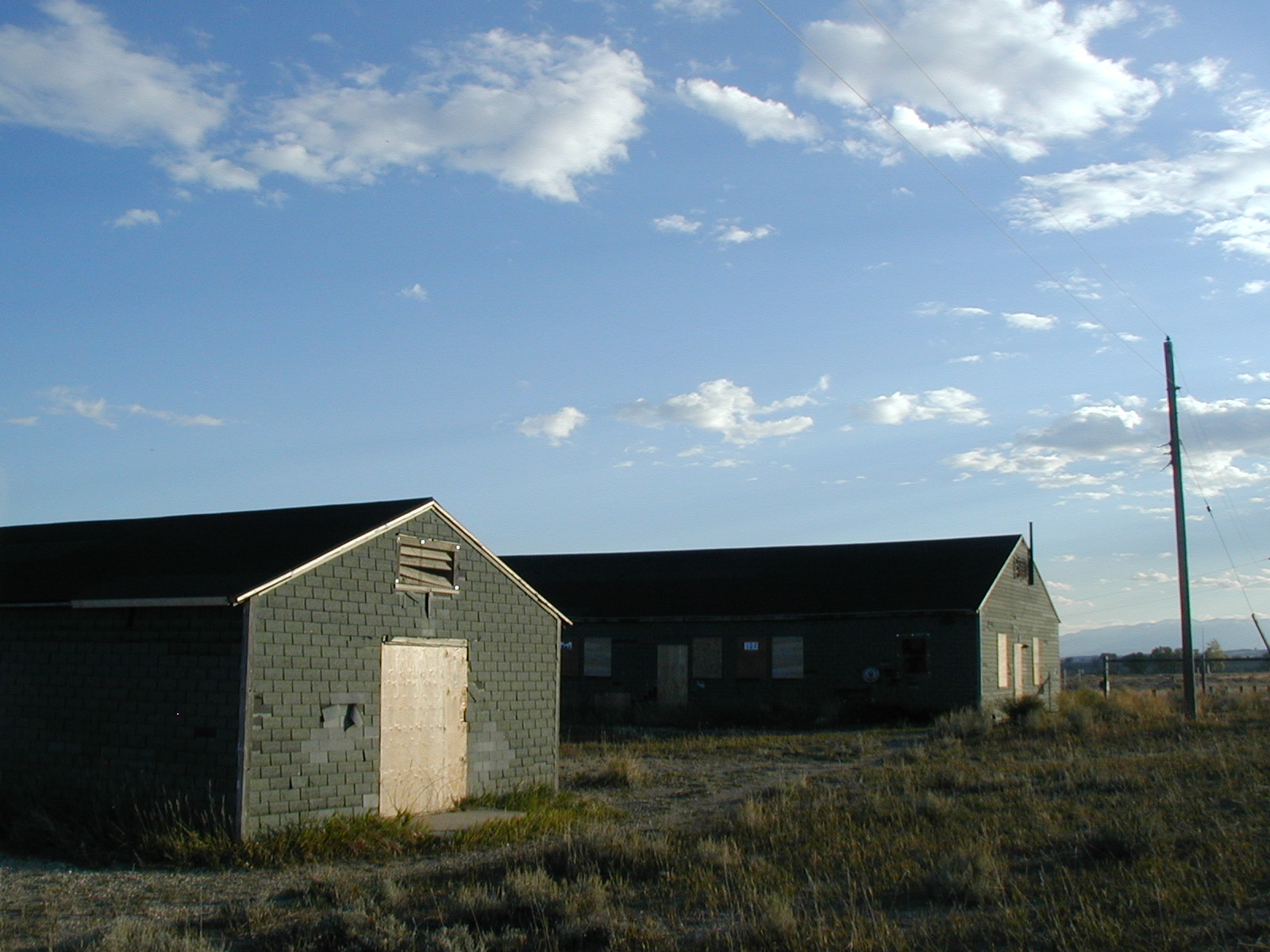18 Aug Heart Mountain internment camp’s new interpretive learning center opens this weekend

It’s a fact: The 10 concentration camps built during World War II to imprison 120,000 people of Japanese descent — more than half U.S.-born and therefore American citizens, and most of them mere children — were all thrown together in godforsaken corners of the country.
No offense to people who live near the sites of these former “relocation centers” (a silly government euphemism that was easier to swallow than the words “concentration camp” that President Roosevelt himself used), but Camp Amache in southeastern Colorado is a forlorn, dusty expanse of whole lot of nothing for miles and miles. It takes four hours of driving through mostly flat, dull prairie to get to the town of Granada from Denver.
It takes nine hours on on the road from Denver to get to Heart Mountain, although the drive is a little more scenic, to the base of a towering peak north of Cody, Wyoming in the northwest corner of Colorado’s neighbor to the north. For years, like at many of the concentration camps from the war years, there has been only a couple of memorials erected by former internees, and only a couple of buildings, including several of the dilapidated barracks buildings within view of the camp’s namesake mountain. Most of the buildings and equipment were sold off to ranchers after the war; like many of the camps, non-profit groups have been tracking down and reconstructing buildings if they’re available and still standing.
Heart Mountain is notable for a couple of reasons: It’s where Bill Hosokawa, the journalist from Seattle, was interned for 13 months before getting a job at a newsaper in Iowa during the war. After WWII, Hosokawa moved to Denver andsoent the rest of his life as a reporter, editor, diplomat and civil rights leader. And, Heart Mountain is the camp where a group of draft resisters became notorious and were eventually sentenced to Federal prison for simply refusing to accept being drafted out of camp when their families had lost everything and were unjustly imprisoned by the US government. This is one topic that still needs to be explained and taught about (I’ll be writing a review of “Conscience and the Constitution,” an excellent documentary about the draft resisters, soon.)
We’ve driven to Heart Mountain, and were chilled by the desolate majesty of the locale.
The mountain itself is a powerful image, one that adds an iconic feel to this camp that Amache in Colorado doesn’t have (it’s just flat and empty all around). We stopped at a florist and gift shop between Cody and Heart Mountain where a woman who was interned at the camp still worked, decades later. I wish I still had her name and number.
But over the years, the Heart Mountain Wyoming Foundation has been working diligently — and quietly — on building an 11,000 square feet facility at the former camp site that includes exhibition space and a theater. The Heart Mountain Interpretive Learning Center (ILC) opens this weekend with sold-out events that will be attended by some very high profile special guests.
Here’s a list of the speakers and invited VIPs for Friday’s All-Camp Get-Together and Pilgrimage Dinner at the Park County Fairgrounds, and saturday’s dedication ceremony at the ILC at the former camp grounds:
Guest Speaker Tom Brokaw, Pilgrimage Dinner
Kicking off the weekend, broadcast journalist and author Tom Brokaw will be special guest speaker at the Pilgrimage Dinner on Fri., Aug. 19. One of America’s most trusted and respected journalists, Mr. Brokaw anchored “NBC Nightly News” for 21 years and is now a special correspondent for NBC. A best-selling author, his book “The Greatest Generation” chronicles America’s World War II generation and includes the story of the incarceration of Japanese Americans.Keynote Speaker Sen. Daniel Inouye, ILC Dedication Ceremony
Delivering the keynote address at the ILC Dedication Ceremony on Sat., Aug. 20, will be Hawaii Sen. Daniel Inouye. As president pro tem of the Senate, he is the highest ranking Asian American elected official in U.S. history. A war hero and respected legislator, he advocated to establish the commission that issued the report “Personal Justice Denied,” which led to passage of the Civil Liberties Act of 1988, granting token redress payments to surviving Japanese Americans incarcerated during WWII.
Sec. Norman Mineta and Sen. Alan Simpson, Introduction Remarks
Introducing Sen. Inouye at the Dedication Ceremony will be two statesmen who met at Heart Mountain as Boy Scouts when one was incarcerated there with his family and the other belonged to a troop in his nearby hometown of Cody. Former U.S. Sen. Alan Simpson, who serves on the HMWF Advisory Council, and former Congressman and Secretary of Transportation Norman Mineta, became lifelong friends. And both were co-sponsors of the Civil Liberties Act of 1988.Panel of Experts, Grand Opening Banquet
At the Grand Opening Banquet the evening of Sat., Aug. 20, a panel of distinguished experts will discuss the Japanese American experience during WWII, commenting on legal, psychological and legislative perspectives and how lessons from the past inform today’s civil rights discussions:
Ms. Irene Hirano Inouye, former president and founding CEO of the Japanese American National Museum in Los Angeles, and current president of the US-Japan Council;
Judge Lance Ito, Los Angeles County Superior Court Judge and respected advocate for judicial reform, whose parents were incarcerated at Heart Mountain;
Sec. Norman Mineta, a member of the U.S. House of Representatives for more than 20 years, and the first Asian American named to a cabinet post, serving in two presidential administrations.
Dr. Melba Vasquez, president of the American Psychological Association and recognized expert in multicultural issues.
Unfortunately, we can’t make it to Heart Mountain for this grand opening ceremony, but we’re looking forward to returning to Cody and visiting Heart Mountain again. I hope the woman we met at the flower shop is still there, and will be attending the opening ceremony. What a sweet way to get some closure for the troubled times she lived through.
And, we’re looking forward to having such an educational facility built at Colorado’s Camp Amache some day.






